Marine Desert Adventure
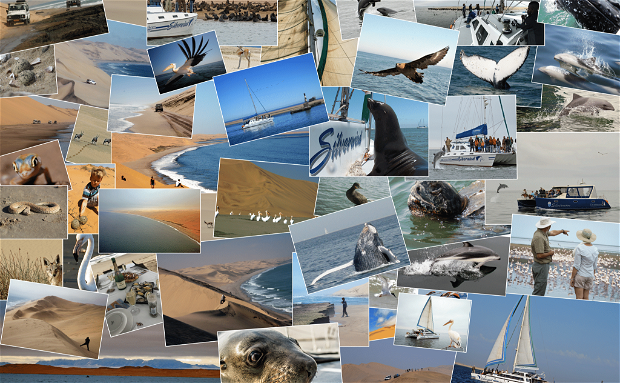
Experience leasure sailing on the south Atlantic ocean in search of the marine Big 5 and a thrilling 4x4 ride through the majestic dunes to the breathtaking Sandwich Harbour. – all in one day!
We set sail between 08h45 and 09h00 (check-in 08h30) every morning from our Jetty at the Walvis Bay Waterfront for a marine educational sailing excursion in the bay area in search of the Marine Big 5: Whales, Dolphins, Mola, Leatherback turtle and seals. While serving hot coffee and tea, our initial route takes us past oyster farms as we approach Pelican Point with its landmark lighthouse and 60,000 resident Cape Fur Seals.
In season (July to November), larger mammals such as the Southern Right Whale and Humpback Whales are often spotted, while other whale species, such as the Gray whale and the Pygmy Right whale have made appearances. We have an excellent chance of seeing at least one of the more common members of the Marine Big 5 as we are often accosted by Bottlenose, Heaviside and Dusky dolphins who look to satisfy their curiosity. Sunfish and Leatherback Turtles are occasionally spotted. Accompanying our four catamarans throughout are a variety of seabirds, such as the Kelp Gull, Hartlaub’s Gull, Pelicans, Skua and Cape Cormorant.
Our journey from Pelican Point takes us past some of the more interesting ships and oil rigs in the bay as we serve fresh oysters with sparkling wine, savoury snacks and desserts together with light drinks, cooldrinks and water. We return to the Waterfront at about 12h30, where your Sandwich Harbour 4x4 guide will meet you for your afternoon Sandwich Harbour excursion.
Our first stop long the way to the Sandwich Harbour Area the Walvis Bay lagoon, one of five RAMSAR sites located in Namibia. The lagoon forms part of the larger Walvis bay wetland area that is home to thousands of migratory birds. We will have the opportunity to observe large number of Greater and Lesser Flamingoes during out brief stop here.
From here our journey takes us to the Walvis Bay salt pans where 50 million tons of seawater is processed to produce 700 000 tons of high-quality salt. These pans form part of the larger Walvis Bay wetland area and measures 4,500 hectares. Moving past the salt processing facility, we pass through the Kuiseb River Delta in the direction of Sandwich Harbour. If the tide is low enough, we’ll approach the lagoon driving along the beach. In the event of the tide being too high, we will approach our destination by means of a route over and through the dunes. This exciting dune ride will bring guests to a lookout point on top of one of the high dunes overlooking the Atlantic Ocean. From here guests will have an unobstructed view of the entire Sandwich Harbour Lagoon. Once a trading port, the Lagoon is currently a protected area and another of Namibia’s five RAMSAR sites.
We have lots of time to stop along the way for photography. The shapes, colors and textures of the Namib dunescapes make it a most unique and beautiful landscapes that should not be missed by anyone looking for that special holiday photo. Both amateur and professional photographers are welcome and there is ample time to stop and take photographs. This area is one of the most scenic places on earth to photograph, so make sure to bring your camera and favourite wide-angle lens.
We stop along the way to enjoy our world famous oysters, sparkling wine, drinks and cooldrinks. Depending on the weather condition, we do this on top of a high dune overlooking the Atlantic Ocean, on the beach, or amongst the dunes. The route homeward will take us past the area’s typical fauna and flora, including the endemic !Nara plant. Animals which have developed ways to adapt to the desert include the black-backed jackal, fog-basking beetle, dancing spider (‘white lady of the Namib’), golden mole, shovel-snouted lizard, palmato gecko, springbok, oryx, brown hyena and ostrich.
We return to Walvis Bay at 16h30.
Gallery
Itinerary
Walvis Bay, Waterfront
The day starts with a marine educational cruise on one of our luxury catamarans at 09h00 in search of the marine big 5: Whales, Dolphins, Mola, Leatherback turtle and seals.
Pelican Point
hile serving hot coffee and tea, our initial route takes us past oyster farms as we approach Pelican Point with its landmark lighthouse and 50,000 resident cape fur seals.
In season (July to November), larger mammals such as the Southern Right Whale and Humpback Whales are often spotted, while other whale species, such as the Gray whale and the Pygmy Right whale have made appearances.
Bottlenose, heaviside and dusky dolphins are regularly seen, as are Mola Molas and Leatherback Turtles. Accompanying our three catamarans throughout are a variety of seabirds, such as the Kelp Gull, Hartlaubǯs Gull, Pelicans, Skua and Cape Cormorant.
Pelican Point - Waterfront, Walvis Bay
Our journey from Pelican Point takes us past some of the more interesting ships in the bay as we serve fresh oysters with sparkling whine, savoury snacks and desserts together with light drinks, cooldrinks and water.
We return to the waterfront at 12h30, where your Sandwich Harbour 4x4 guide will meet you with one of our all-wheel drive vehicles.
Kuiseb River Delta via the Walvis Bay Saltpans
On the way to the Sandwich Harbour Area, we stop at the Lagoon to view the flamingoes, before we head towards the Kuiseb River Delta via the Walvis Bay Saltpans.
Depending on the tides and the swell, we will try to reach the Sandwich Harbour Lagoon along the beach, one of Southern Africa's richest and unique wetlands.
Alternatively, we will take an exciting dune ride to our lookout dune to get an aerial view of the Sandwich Harbour Lagoon. We have lots of time to stop along the way for photography.
Light meal overlooking the Atlantic Ocean
We stop along the way to enjoy our world famous oysters, sparkling wine, drinks and coldrinks.
Depending on the weather condition, we do this on top of a high dune overlooking the Atlantic Ocean, on the beach, or among the dunes.
Back to Catamaran Charters HQ
The route homewards will take us past the area's typical fauna and flora, including the endemic Nara plant.
Animals which have developed ways to adapt to the desert include the black-backed jackal, fog-basking beetle, dancing spider (white lady of the Namib), golden mole, shovel-snouted lizard, palmato gecko, springbok, oryx, brown hyaena and ostrich. We return to Walvis Bay at 17h00.

















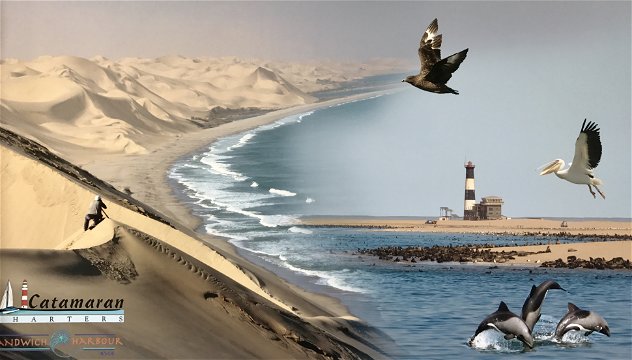
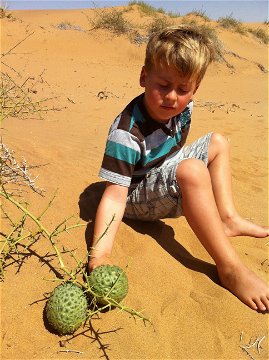
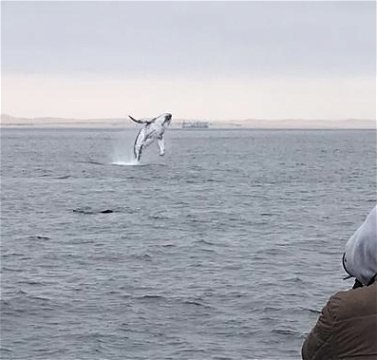
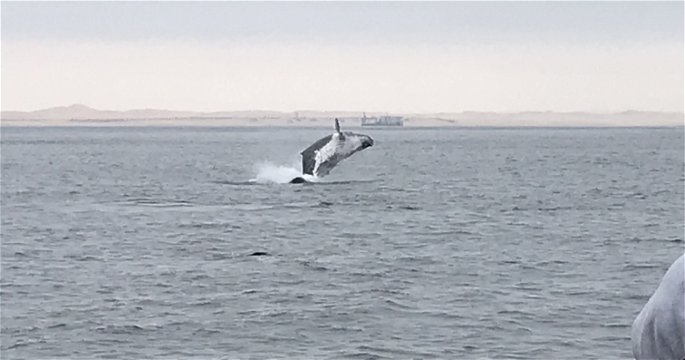
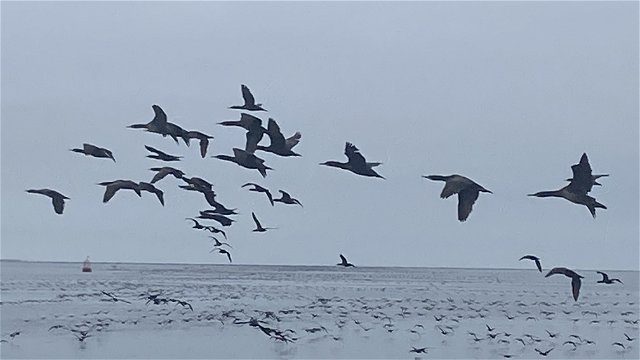
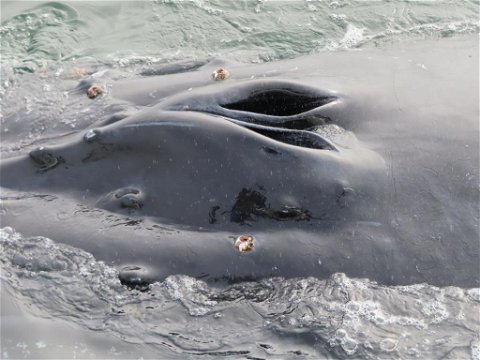
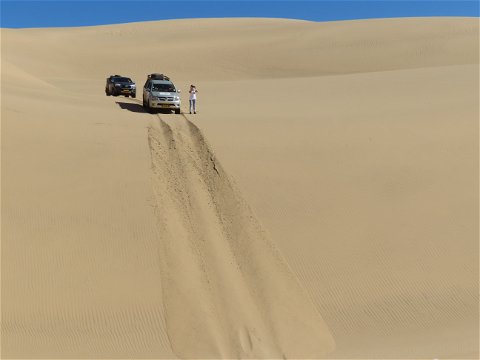
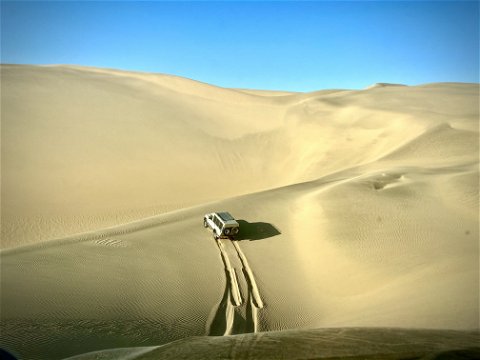


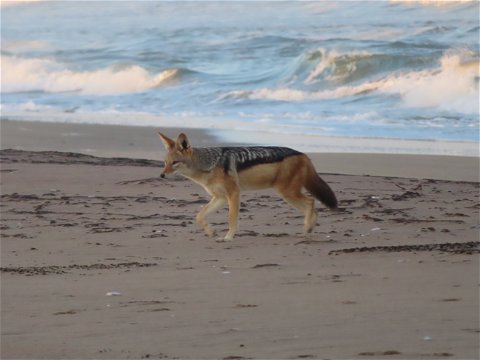



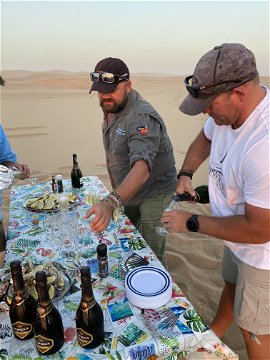
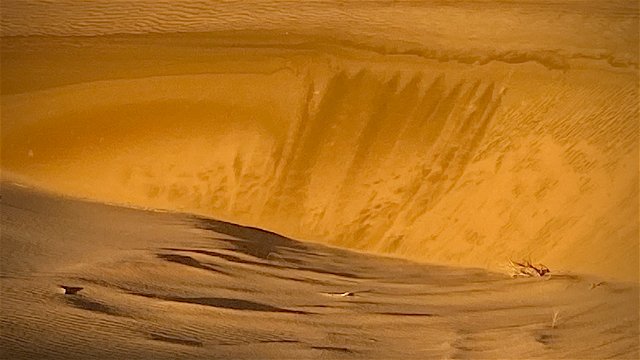
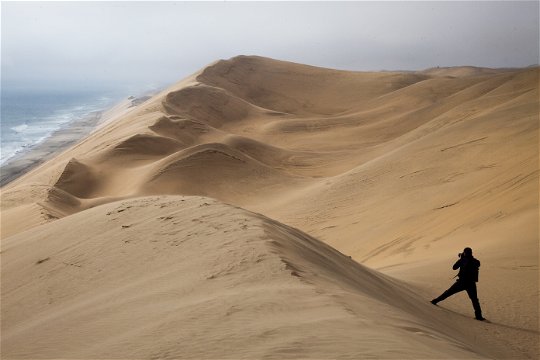

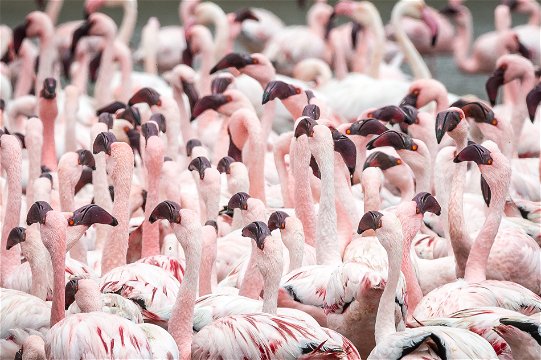
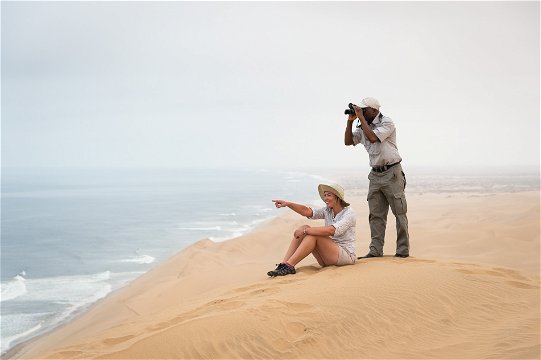
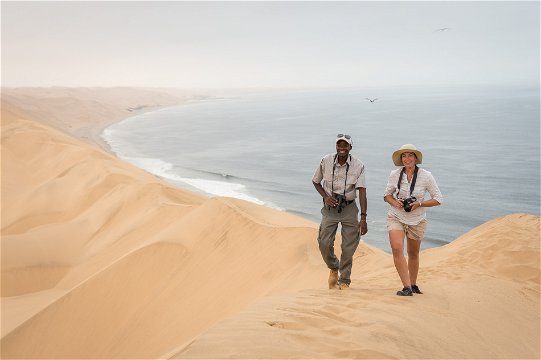

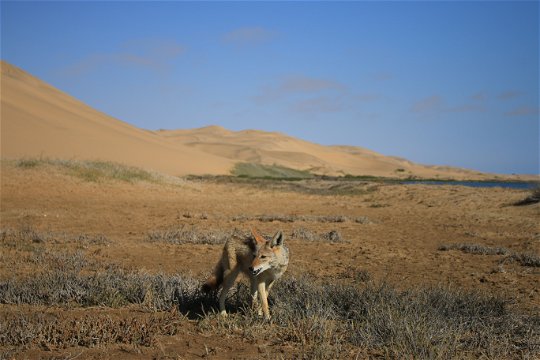
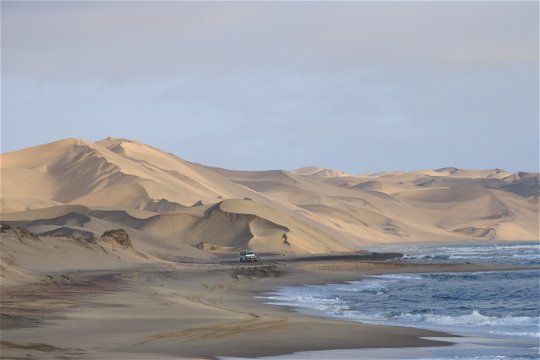


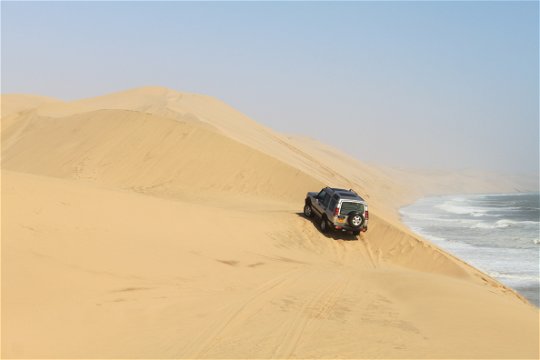
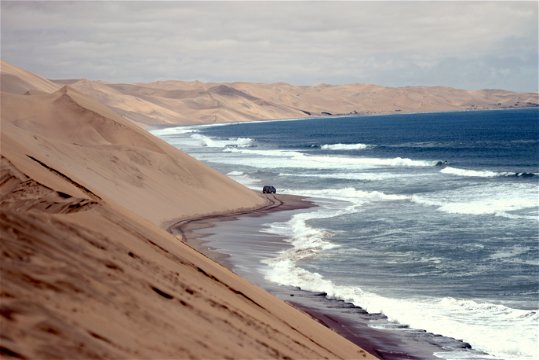
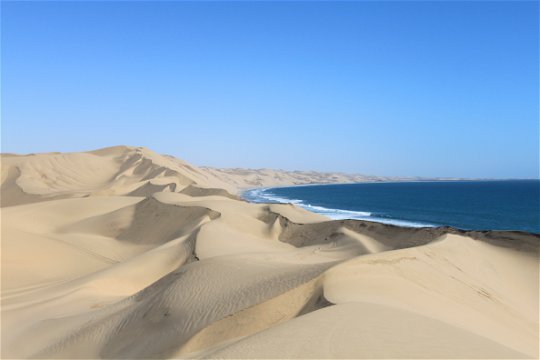
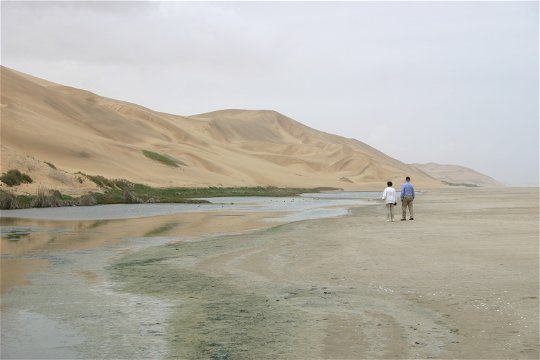
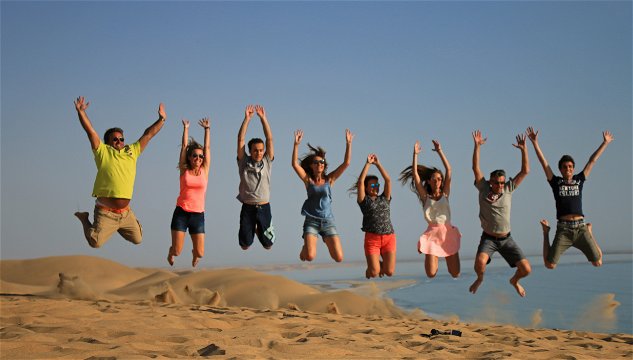
Share This Page